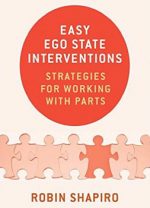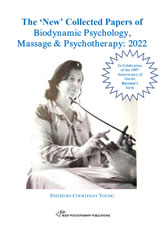Boundary Boss: The Essential Guide to Talk True, Be Seen, and (Finally) Live Free
By Nancy Eichhorn, Ph.D.
My inner editor smiles (envision a Cheshire Cat grin) when reviewing a new book and its layout includes all the necessary...
Contemplative Psychotherapy Essentials
I sat down to read Contemplative Psychotherapy Essentials with an agenda in mind. I felt rushed to get through the chapter yet found myself slowing, breathing. I settled into the chair. The have-to-do’s vanished. I was simply and completely present with the text. Wegela offers quotes from other Buddhist teachers, case examples from clients and students. Terms are defined and demonstrated. The material is accessible, user-friendly. A true invitation to not only read about but to also personally experience it, try it out, let it flow within and through.
Resilience: Powerful Practices for Bouncing Back from Disappointment, Difficulty, and Even Disaster
Linda Graham’s 2018 book, Resilience: Powerful Practices for Bouncing Back from Disappointment, Difficulty, and Even Disaster, is a continuation of the practices she first wrote about in her book, Bouncing Back: Rewiring Your Brain for Maximum Resilience and Well-Being. Throughout each chapter, Graham details exercises aimed to build and strengthen resilience by way of regular practice. Graham divides the book into eight chapters that are designed to guide the reader through a journey of understanding and strengthening resilience.
Hakomi Mindfulness-Centered Somatic Psychotherapy: A Comprehensive Guide to Theory and Practice
Perhaps it’s because the contributors and editors are all Hakomi specialists, perhaps it’s because they are not just practitioners of this methodology but have sincerely immersed themselves in Hakomi’s foundational precepts personally and professionally: mindfulness, presence, loving kindness, and nonviolence. I felt as if the material was written according to the core essence of Hakomi— “assisted self-study done in a state of mindfulness”.
The Man Who Couldn’t Stop:
David Adam manages to describe his everyday experiences with OCD in an innovative and enlightening way while simultaneously intertwining his narrative with the accounts of other sufferers, theory, and scientific studies. It is a book on history, psychology, neuroscience, philosophy, anthropology, and religion and is an essential read for anyone who has, knows somebody with, or is simply interested in OCD.
The Pocket Guide to the Polyvagal Theory: The Transformative Power of Feeling Safe
I am, admittedly and unabashedly, enthusiastic about Stephen Porges’ work. I’ve attended his workshops, learned his process for measuring heart rate variability as an indicator of vagal tone, interviewed him for several articles published in this magazine, and have read his books and articles. This review is clearly biased. And with that said, I will offer my honest opinions and not side step points that for some may or may not be considered 100 percent positive.
For those new to Porges’ work, he is noted as the originator of the Polyvagal Theory (PVT), which is his perspective of how our autonomic nervous system, dependent on phylogenetic transitions/shifts that occurred between reptiles and mammals, resulted in specific adaptations in vagal pathways regulating the heart, which in turn impact our lives.
Infant and Toddler Development: From Conception to Age 3. What Babies Ask of Us
Mary Jane Maguire-Fong and Marsha Peralta, recently published, Infant and Toddler Development: From Conception to Age 3. What Babies Ask of Us. In their “Preface”, they acknowledged my mom as a colleague and friend who has been “a source of wisdom, counsel, and inspiration in this work” (pg. x). Peralta noted, “We have so appreciated her contributions to our thinking and perspective”
The 10 Best-Ever Anxiety Management Techniques: Understanding How Your Brain Makes You Anxious &...
In the Second Edition of her book, Dr. Margaret Wehrenberg revisits her 10 techniques for dealing with anxiety. She also revisits the companion workbook that provides activities to guide implementation of the techniques. These books are very accessible, even with the dispersed neuroscience throughout; they also have the advantage of catering to a wide audience including, but not limited to, those who are participating in psychotherapy. Her 10 techniques offer various ways to manage three arenas in which anxiety manifests itself: the body, the mind, and behavior. The workbook offers several, different ways to make the managing of anxiety actionable and consistent. By taking this two-pronged approach, Dr. Wehrenberg captures a large swath of information and applies it thus making her books a potential one-stop-shop for anxiety management.
To fully appreciate the workbook, one must first read the technique book that serves to explain, in depth, what they are, why they work, and how to use them. Utilizing developments in neuroscience, Dr. Wehrenberg updates her 10 techniques by refining those at the forefront, providing new research-based evidence for them, and clarifying how they should be used (I).
Transforming Emotional Pain in Psychotherapy: An Emotion-Focused Approach
Transforming Emotional Pain in Psychotherapy: An Emotion-Focused Approach presents a review of EFT with well-informed categorization of the many sub-components of emotional pain coupled with real case transcripts and the reasoning behind both the client’s and therapist’s advances.
The Weirdest People in the World: How the West Became Psychologically Peculiar and Particularly...
Reviewed by: Lily Wu
What is WEIRD? WEIRD is an acronym for Western, Educated, Industrialised, Rich and Democratic. Henrich and his colleagues coined it about...














